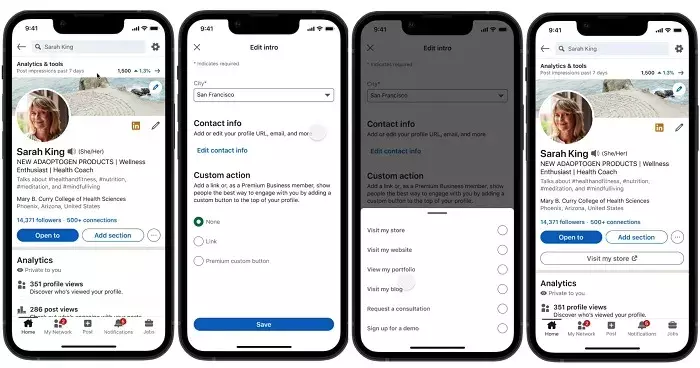In a surprising strategic maneuver, LinkedIn has decided to eliminate the option for users, particularly those with Premium accounts, to incorporate custom links into their profiles. This shift comes on the heels of an announcement regarding the service’s emphasis on rigorous evaluations of its features, which raises questions about its commitment to enriching user experience. What once offered a robust way for users to drive traffic to their personal brands is being dialed back, leaving many to wonder whether this change reflects a deeper limitation in LinkedIn’s understanding of its users.
The custom link feature was a valuable tool enabling users to showcase professionalism and drive traffic to personal websites, portfolios, or even online stores. For a platform predicated on networking and professional advancement, limiting the potential avenues for users to promote themselves seems counterintuitive. LinkedIn’s rationale—that the functionality was not widely used—is troubling, as it suggests a disconnect between the platform’s direction and the needs of its user base. This is especially relevant considering that approximately 175 million individuals are paying for Premium features; thus, it begs the question—who, exactly, is LinkedIn serving?
A Move Towards Homogeneity
The removal of a unique feature like custom links suggests a worrying trend toward a more homogeneous experience on LinkedIn. By prioritizing a ‘one-size-fits-all’ approach, the platform risks alienating those who use creative means to differentiate themselves. The current professional landscape values individuality; the ability to convey one’s unique selling proposition can make a difference in grabbing the attention of recruiters or potential clients.
If LinkedIn is truly aiming to bolster its offerings to premium members, this feels like a step backwards. The interface that once allowed individuals to craft a distinctive narrative now feels restrictive. Furthermore, while businesses with Premium Company Pages can still utilize, and even thrive on these custom CTA buttons, individual users find their options limited. This dichotomy between individual and corporate profiles could indicate that LinkedIn is prioritizing revenue-generating entities over the personal ambitions of its ordinary users.
The Contradictions of a Creator-Friendly Platform
Interestingly, LinkedIn has made strides towards being more creator-friendly in recent years, engaging influencers and content creators to drive engagement on the platform. By working to court creators who contribute to the platform’s content ecosystem, LinkedIn has positioned itself as a medium for thought leadership. Yet, the removal of custom links seems at odds with this aspiration. How can creators effectively brand and promote their content if their profile lacks a custom gateway?
There seems to be a fundamental misunderstanding of the creator economy’s needs within LinkedIn’s higher ranks. Creators need avenues to guide their audience to various projects connected to their profiles, whether it be an eBook, a podcast, or a consulting service. Without the ability to customize their links, creators might find themselves stymied in driving traffic back to their work.
Gazing Into the Future: A Question of Trust
Beyond the implications for individual users, one must also consider the broader narrative regarding trust and user experience. LinkedIn’s closed-off view of interactions—potentially fueled by internal data regarding link effectiveness—creates an environment where users feel that their tools are being snatched away without full transparency. The rationale typically cited—that these links could lead to questionable content—raises eyebrows as a flimsy justification. If the platform truly wishes to maintain a dignified professional environment, there are ways to audit and monitor links without overreaching to the point of stifling user expression.
Furthermore, as LinkedIn continuously positions itself to be the pinnacle of professional networking, it runs the risk of alienating users who found value in the unique offerings of their systems. The determination to eliminate features that don’t meet an alleged critical mass of usage could backfire dramatically if users feel that their needs are continuously overlooked.
In the end, while LinkedIn’s intentions may point toward a more streamlined user experience, the reality may well be an isolation of individual narratives. Users need to feel empowered, not restricted, in portraying their professional identities. The removal of custom links is more than a simple feature change; it symbolizes a significant philosophical shift that might not bode well for the future of individual expression on the platform.

